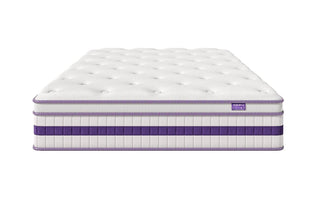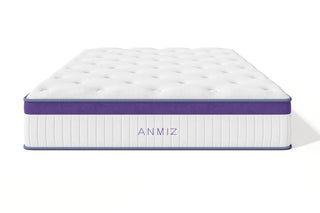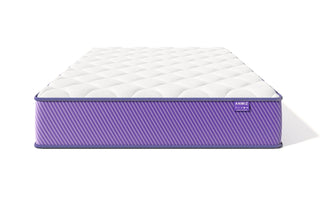Mattress Edge Support
We occasionally receive free products for testing and take part in affiliate programs, which means we may earn a commission if you purchase items through links on our site. For full details, please refer to our disclosure page.
When you sit or lie down near the edge of your mattress, do you ever feel like you might slide off? If so, your bed may lack proper edge support.
When we review mattresses, we carefully evaluate how well their edges hold up. Keep reading to learn about our testing process and what features contribute to great edge support.
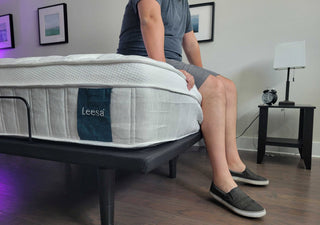
Why Is Edge Support Important?
There are many benefits to sleeping on a mattress with excellent edge support. Reinforced edges enhance the mattress’s overall durability and performance. Strong edge support helps prevent sagging, makes it easier to get in and out of bed, and gives you more usable sleeping surface.
Without proper edge reinforcement, you may feel unstable sitting or lying near the side. This reduces the amount of usable space and, in extreme cases, could even cause you to roll off the bed entirely.
Who Should Look for Beds with Strong Edges?
While anyone can enjoy the benefits of solid edge support, certain sleepers should make it a priority.

People with Small Beds
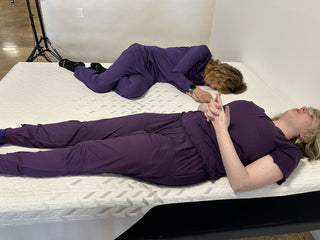
Couples
If you share your bed, you’ll want edges that feel secure and stable. If the sides collapse, you’ll both end up crowding toward the middle. This limits the usable surface and can make the bed feel tight and uncomfortable.

Older Adults and People with Mobility Concerns
For those who have trouble moving or experience joint pain, sturdy edge support can make getting in and out of bed much easier. Without it, the edges may sink, creating a slipping risk. That’s why we often recommend mattresses with reinforced sides for seniors, people with arthritis, or anyone with limited mobility.
How We Test Edge Support
Every mattress we review goes through a detailed edge support assessment. We assign a score from 1 to 5, with 5 representing exceptional edge strength. Here’s how we evaluate it.

Seated Test
Different people experience edge support differently, so we use multiple testers to get balanced feedback. Each tester sits on the mattress’s side to gauge how much they sink in, then repeatedly gets up and down to assess the edge’s stability during movement.
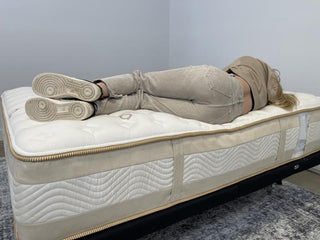
Full-Body Test
Next, testers lie near the edges in various sleeping positions. If they feel like they could roll off, the mattress’s edge support rating drops accordingly.
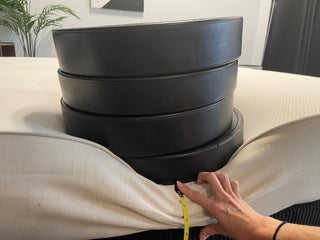
Tape-Measure Test
Finally, we perform a quantitative test. Weighted plates are placed on the mattress edge, and we measure how much the perimeter compresses. If the sinkage stays under five inches, we consider the edge support to be strong and dependable.
What Gives a Bed Good Edge Support?
The level of edge support depends largely on the mattress’s materials and design. Dense foams typically provide less support compared to coil systems.
Many modern mattresses feature reinforced edges, created using high-density foam or pocketed coils to prevent sagging and help sleepers feel secure near the perimeter.
Let’s explore how different mattress types generally perform in our edge support testing.
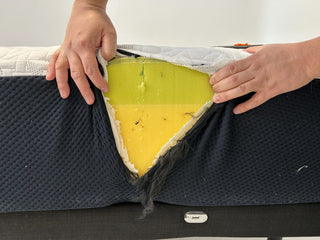
Memory Foam
In our experience, all-foam mattresses usually have weaker edge support. The soft, slow-moving foam layers compress under pressure, which can make some sleepers feel like they’re about to slide off.
However, not all memory foam beds perform poorly—some are built with denser perimeter foam to strengthen the edges and reduce sagging.
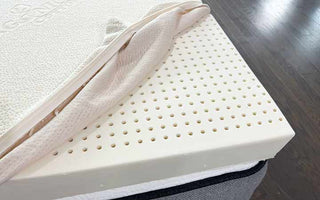
Latex
Latex and latex hybrid mattresses generally have excellent edge support. Latex is naturally supportive and resilient, often lasting over 15 years without sagging. Its durability and bounce make it one of the best materials for maintaining consistent edge strength.
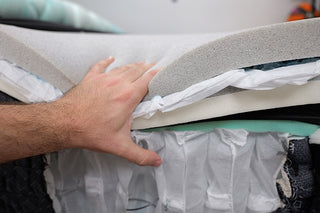
Hybrids and Innersprings
Both hybrid and innerspring mattresses tend to perform better because their coil cores provide stronger support and resist long-term sagging. Coil layers maintain firmness along the edges and help distribute weight evenly over time.



